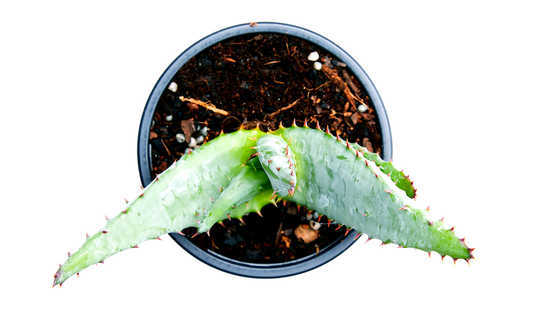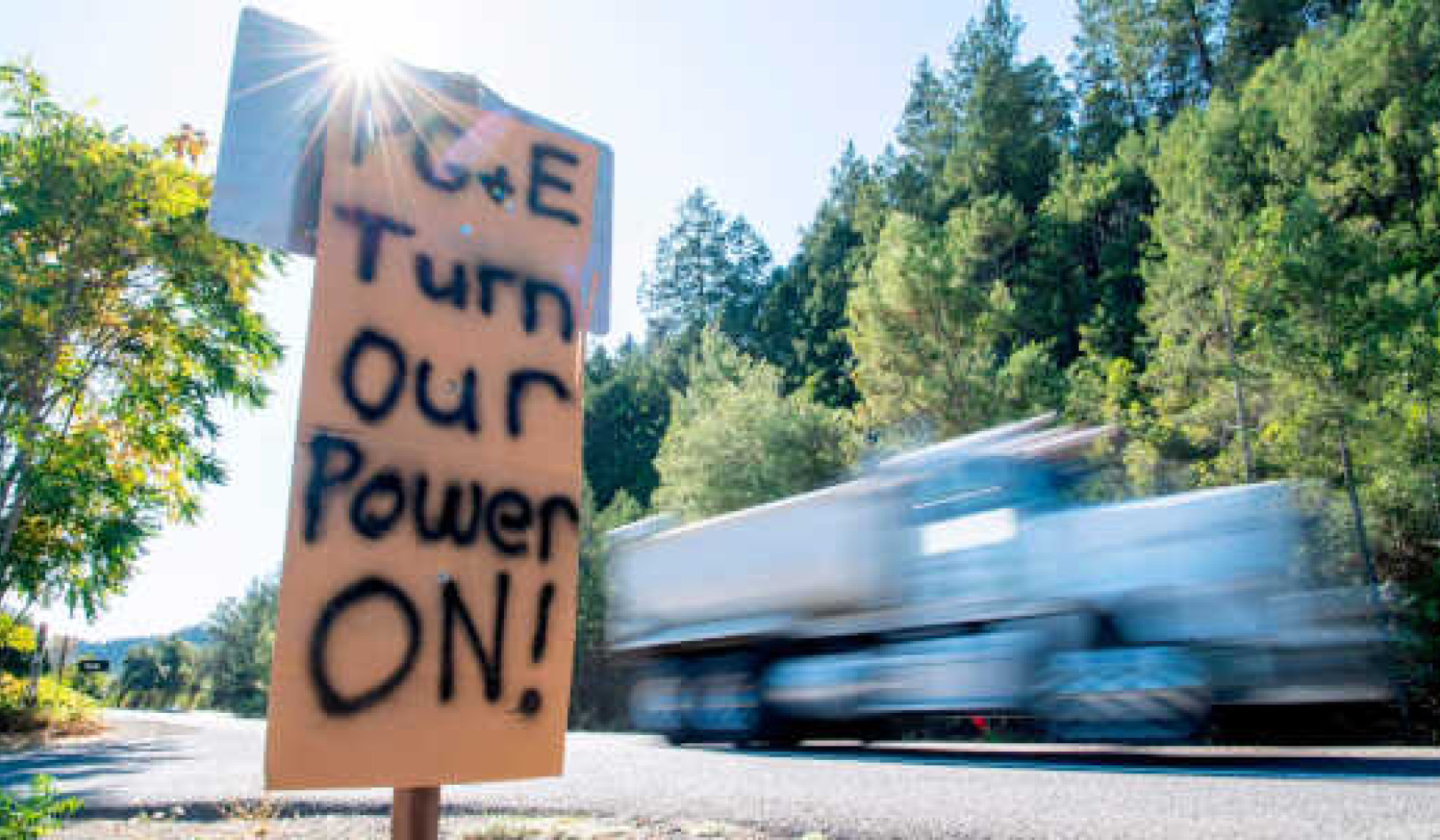
Aloe. (Credit: Rhinda Larson/Unsplash)
The aloe plant’s ability to survive extended periods of drought could contribute to more resilient crops.
“Our results tie changes in carbohydrate composition with the aloe plant’s ability to manage extended periods of drought. It is highly relevant that we understand the physiological mechanisms that allow certain plants to survive under extreme conditions, due to climate change and the potential for severe climatic fluctuations,” says plant biologist Louise Isager Ahl of the Natural History Museum of Denmark.
The majority of succulents can survive in areas susceptible to shorter or extended periods of drought. This ability has made succulents popular as houseplants. Aloe vera, along with other aloe species, have a special tissue in the middle of their leaves known as the hydrenchyma. This tissue has a well-developed ability to control water content in leaves.
To resist drought, succulents fold their cell walls together during dehydration and unfold them again as water becomes available. The unique composition of carbohydrates in the cell walls and within the cells of the hydrenchyma is partly responsible for these plants’ ability to regulate and retain water. It is a trait that may be transferable to other plants.
“I can imagine that by identifying and understanding the genetic mechanisms allowing aloe species to fold and unfold their cell walls, we will be able to integrate similar mechanisms into crops to make them more resilient to climate change,” says Ahl.
A German botanist made the first descriptions of succulent plant species with folded cell walls at the end of the 19th century. Another German botanist pursued the topic at the beginning of the 20th century. Since then, few researchers have delved into the underlying mechanisms behind cell wall folding.
Ahl and Jozef Mravec, assistant professor in the plant and environmental sciences department at the University of Copenhagen, wondered if there might be a correlation between the changes they observed in carbohydrate composition and the folding of cell walls. They then began studying the composition of carbohydrates in aloe plants, both before and after droughts.
Their findings appear in the journal Plant, Cell and Environment. Additional coauthors are from the Natural History Museum of Denmark, the University of Copenhagen, and Royal Botanic Gardens, Kew.
Source: University of Copenhagen
Related Books
Climate Adaptation Finance and Investment in California
by Jesse M. Keenan This book serves as a guide for local governments and private enterprises as they navigate the unchartered waters of investing in climate change adaptation and resilience. This book serves not only as a resource guide for identifying potential funding sources but also as a roadmap for asset management and public finance processes. It highlights practical synergies between funding mechanisms, as well as the conflicts that may arise between varying interests and strategies. While the main focus of this work is on the State of California, this book offers broader insights for how states, local governments and private enterprises can take those critical first steps in investing in society’s collective adaptation to climate change. Available On Amazon
This book serves as a guide for local governments and private enterprises as they navigate the unchartered waters of investing in climate change adaptation and resilience. This book serves not only as a resource guide for identifying potential funding sources but also as a roadmap for asset management and public finance processes. It highlights practical synergies between funding mechanisms, as well as the conflicts that may arise between varying interests and strategies. While the main focus of this work is on the State of California, this book offers broader insights for how states, local governments and private enterprises can take those critical first steps in investing in society’s collective adaptation to climate change. Available On Amazon
Nature-Based Solutions to Climate Change Adaptation in Urban Areas: Linkages between Science, Policy and Practice
by Nadja Kabisch, Horst Korn, Jutta Stadler, Aletta Bonn This open access book brings together research findings and experiences from science, policy and practice to highlight and debate the importance of nature-based solutions to climate change adaptation in urban areas. Emphasis is given to the potential of nature-based approaches to create multiple-benefits for society.
This open access book brings together research findings and experiences from science, policy and practice to highlight and debate the importance of nature-based solutions to climate change adaptation in urban areas. Emphasis is given to the potential of nature-based approaches to create multiple-benefits for society.
The expert contributions present recommendations for creating synergies between ongoing policy processes, scientific programmes and practical implementation of climate change and nature conservation measures in global urban areas. Available On Amazon
A Critical Approach to Climate Change Adaptation: Discourses, Policies and Practices
by Silja Klepp, Libertad Chavez-Rodriguez This edited volume brings together critical research on climate change adaptation discourses, policies, and practices from a multi-disciplinary perspective. Drawing on examples from countries including Colombia, Mexico, Canada, Germany, Russia, Tanzania, Indonesia, and the Pacific Islands, the chapters describe how adaptation measures are interpreted, transformed, and implemented at grassroots level and how these measures are changing or interfering with power relations, legal pluralismm and local (ecological) knowledge. As a whole, the book challenges established perspectives of climate change adaptation by taking into account issues of cultural diversity, environmental justicem and human rights, as well as feminist or intersectional approaches. This innovative approach allows for analyses of the new configurations of knowledge and power that are evolving in the name of climate change adaptation. Available On Amazon
This edited volume brings together critical research on climate change adaptation discourses, policies, and practices from a multi-disciplinary perspective. Drawing on examples from countries including Colombia, Mexico, Canada, Germany, Russia, Tanzania, Indonesia, and the Pacific Islands, the chapters describe how adaptation measures are interpreted, transformed, and implemented at grassroots level and how these measures are changing or interfering with power relations, legal pluralismm and local (ecological) knowledge. As a whole, the book challenges established perspectives of climate change adaptation by taking into account issues of cultural diversity, environmental justicem and human rights, as well as feminist or intersectional approaches. This innovative approach allows for analyses of the new configurations of knowledge and power that are evolving in the name of climate change adaptation. Available On Amazon
From The Publisher:
Purchases on Amazon go to defray the cost of bringing you InnerSelf.comelf.com, MightyNatural.com, and ClimateImpactNews.com at no cost and without advertisers that track your browsing habits. Even if you click on a link but don't buy these selected products, anything else you buy in that same visit on Amazon pays us a small commission. There is no additional cost to you, so please contribute to the effort. You can also use this link to use to Amazon at any time so you can help support our efforts.

























